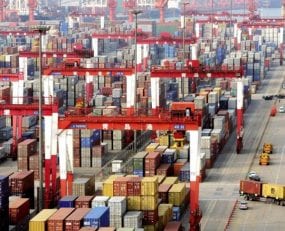
No sooner does one port start to get on top of its congestion problems than another becomes dysfunctional.
The Port of Los Angeles has finally begun to reduce its container and shipping backlogs which date back to November 2020. In the words of Gene Seroka, Executive Director of the Port of Los Angeles, by February “forty container vessels were sitting outside of our breakwater at anchor and the average time sitting was about eight days”. Now, however, the situation has improved with the number of ships at anchor outside the port having dropped “by two-thirds”. Talking to the media over the past couple of days, he admitted that there were still issues with rail services but solutions were being delivered to deal with these as well.
However, as Los Angeles and the West Coast generally has improved, the situation in Southern China has deteriorated. The Port of Yantian in Shenzhen has continued to suffer problems over the past week due to what seems to be the effects of a COVID-19 outbreak in the region. The impact of reduced port productivity is resulting in a reported 20,000 container backlog and a string of shipping lines diverting to other terminals in Guangzhou. It is presumed that the reduction in port productivity is the impact of Chinese lockdown policies on the ability of staff at the port to get to work.
In addition, congestion is now occurring in parts of Europe, with the Port of Hamburg in particular reportedly suffering from a mix of higher container volumes and protests blocking the roads into the port. Some shipping lines have temporarily begun to divert services to neighbouring terminals.
Los Angeles’ Gene Seroka described the issue of congestion as part of a “broad east-west problem across the world”. This seems to acknowledge that consumer demand at the global level continues to be very unbalanced, with the US, in particular, continuing to experience near-boom conditions whilst China has focussed on supporting state-owned enterprises rather than private consumers. Yet these problems also point to continued robustness in global trade, quite different to the fall in intercontinental traffic predicted last year. This is likely to require a continued level of investment in new capacity in logistics infrastructure such as ports.
Source: Transport Intelligence, June 3, 2021
Author: Thomas Cullen